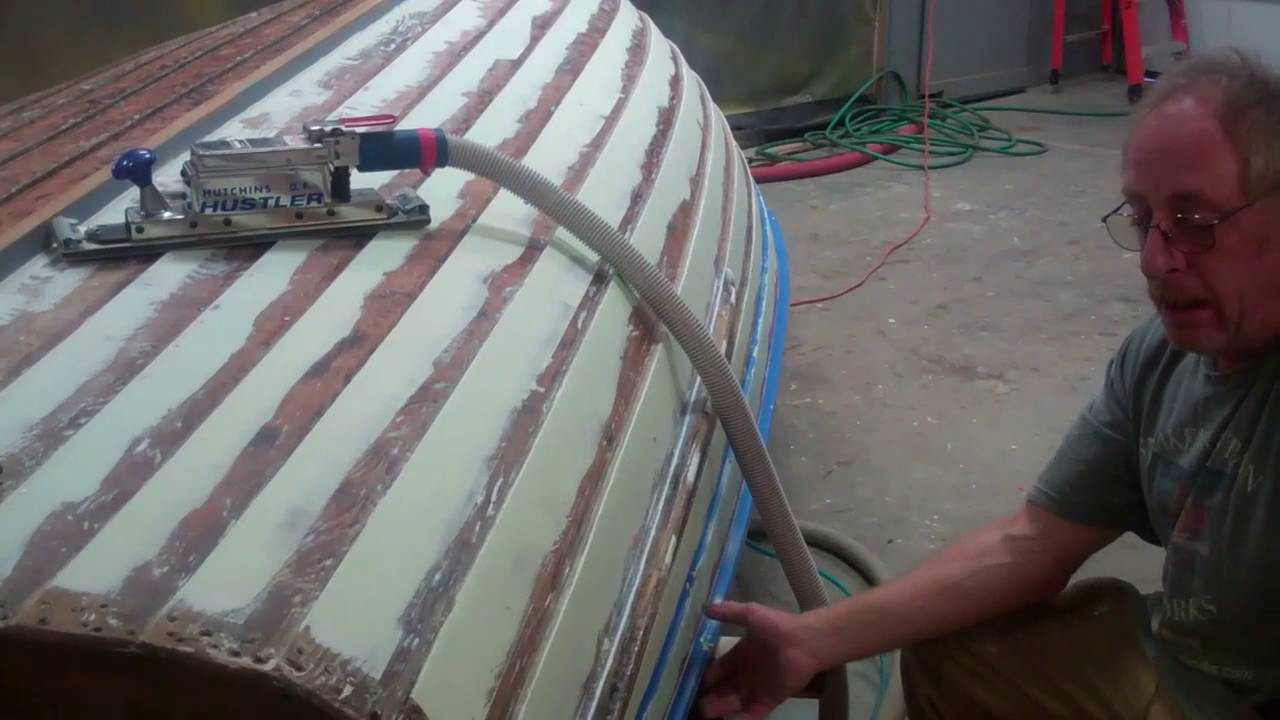Ninnyfish is slowly coming together, but only after she rose up and demanded more attention than we had included in our expected scope of work.
Once released for cleaning, sealing and priming, we discovered that the keelson and keel were badly hogged in a matching pattern. And there is a full ¼” deep layer of rot on the keel’s inner face. Neither could be saved, and both have now been fabricated from FAS grade white oak. Both have been sealed with three coats of CPES and primed with multiple coats of Interlux 2000-E. As you see in this clip, the new keel has been installed and is as straight as an arrow. Yahoo! (not @yahoo… )
Happily, a close inspection of the hull confirmed that every clinch nail remains solidly in place and tight, but wood shrinks just enough over the years that most of the heads were proud of the surface. Fairing every strake from stem to stern using 3M Premium Marine Filler, which is approved for both above- and below-waterline applications provides the solution.
But first RJ sanded the entire strake surface with 80 and then 120 grit longboard paper. (We use the longboard here to protect against producing the moonscape look we have encountered in way too many hull surfaces.) Three full coats of CPES followed the sanding.
John then taped all of the strake-to-strake seams to keep the Filler out of these difficult-to-sand areas. Applying two coats of the Filler followed. He has completed applying the Filler on port and is now sanding the surface, again with 80- and then 120-grit paper. The sanding is accomplished with a dual-action random orbit sander, which John moves quickly over the surface.
Once the sanding is complete, he will seal every strake-to-strake seam with white 3M 5200. Starboard awaits…..

